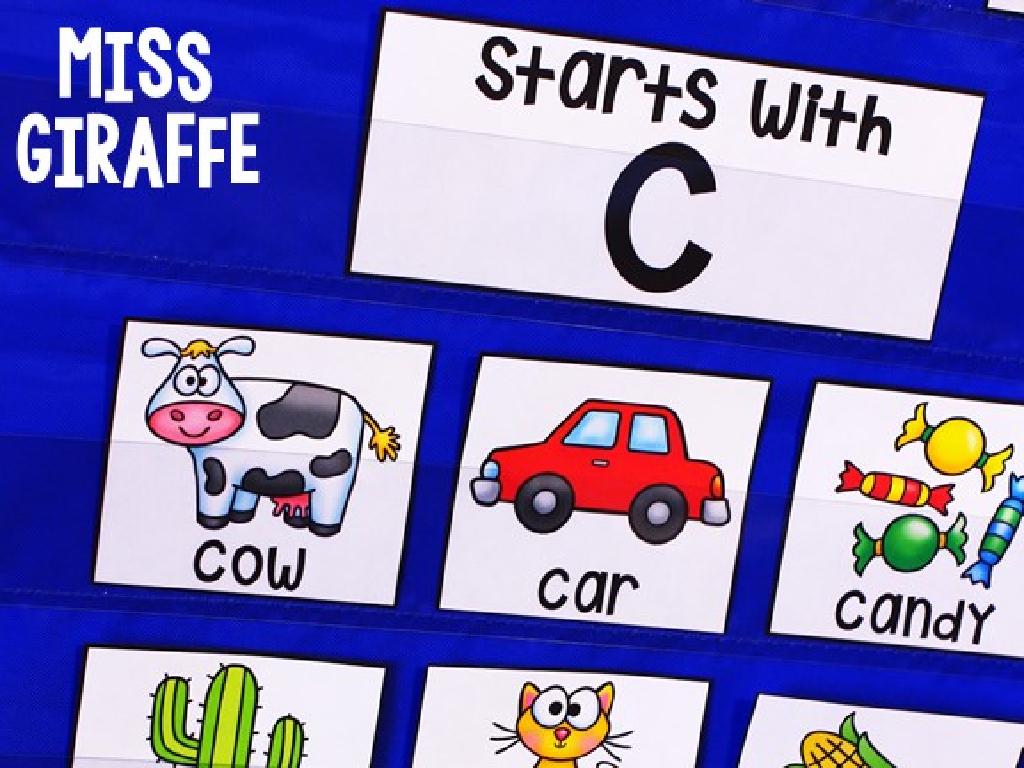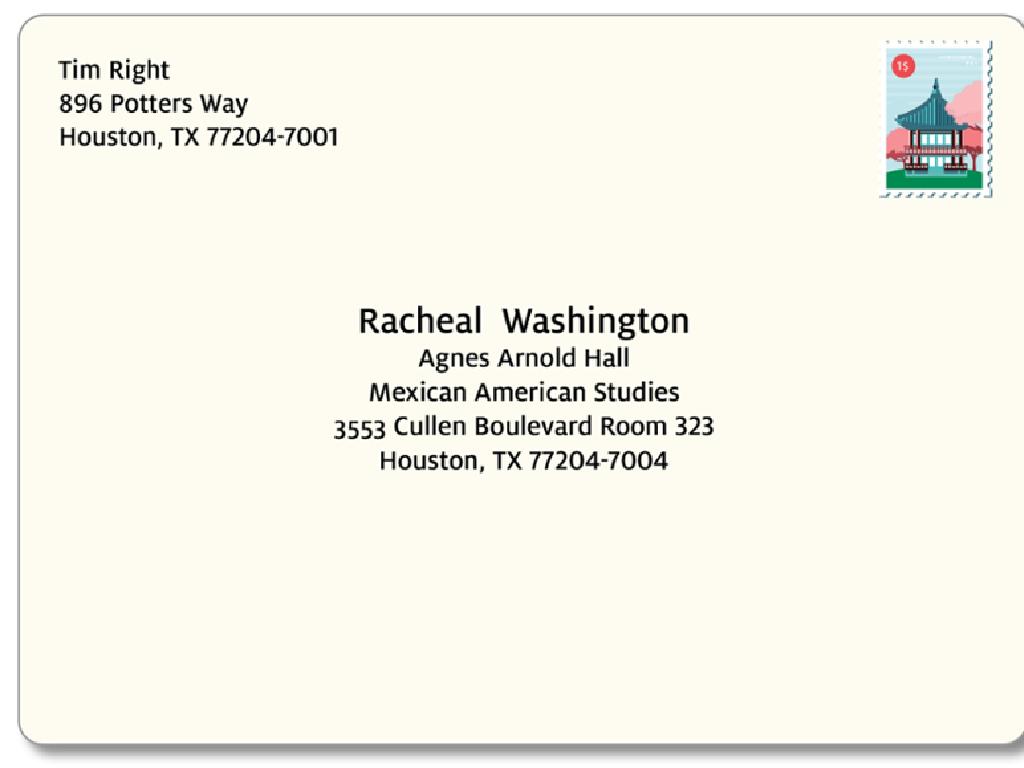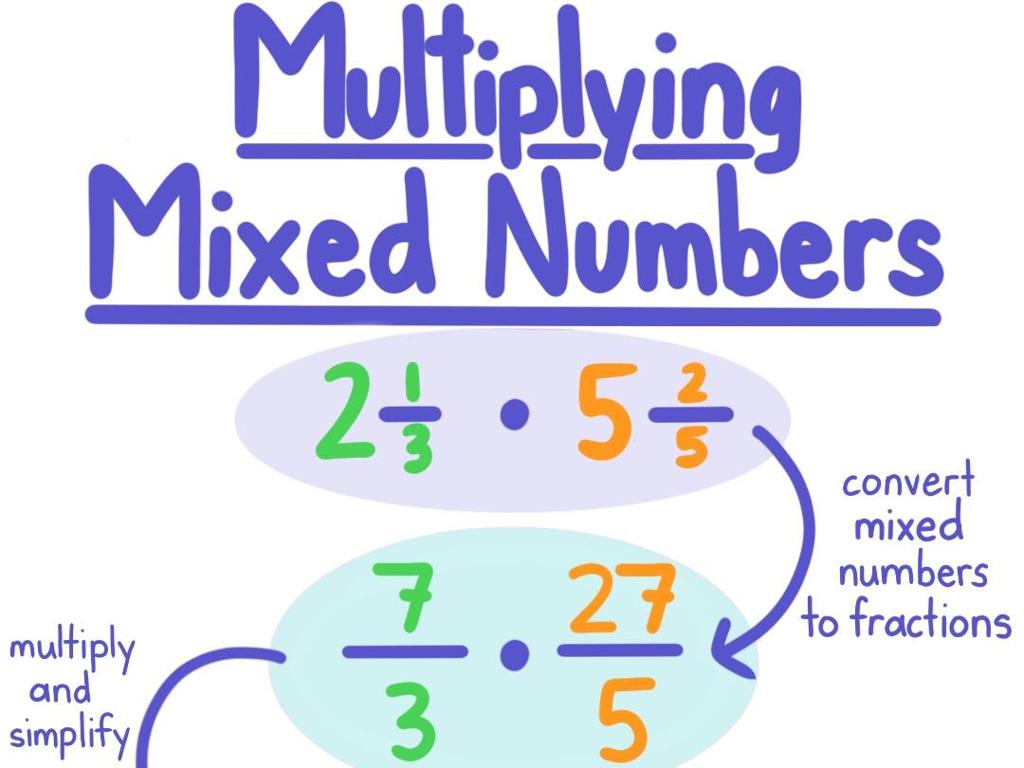Add Or Subtract - Numbers Up To 10
Subject: Math
Grade: Kindergarten
Topic: Mixed Operations
Please LOG IN to download the presentation. Access is available to registered users only.
View More Content
Welcome to Mixed Operations!
– Learning to add and subtract
– Adding is putting together, subtracting is taking away
– Playing with numbers 1 to 10
– We’ll use numbers like 2+3 or 7-4
– Becoming math detectives
– Solving number mysteries
– Find the missing numbers in problems like 5+?=8 or 9-?=3
|
This slide introduces the concept of mixed operations to Kindergarten students, focusing on addition and subtraction within the number range of 1 to 10. Emphasize the concepts of adding as combining two groups of items and subtracting as removing items from a group. Use simple, relatable examples such as adding two apples to three apples or taking away four cookies from a plate of seven. Encourage the children to think of themselves as ‘math detectives’ who solve ‘number mysteries’ by finding missing numbers in equations. This playful approach helps to engage young learners and reduce any anxiety around math. Prepare to have physical objects like blocks or counters for the children to manipulate, which will help them visualize the problems and find solutions.
Learning Addition: Numbers up to 10
– What is addition?
– Addition is putting numbers together
– Adding makes numbers bigger
– When we add 2 and 3, we get a bigger number
– Example with apples
– Starting with 2 apples, add 3 more, now we have 5!
|
This slide introduces the concept of addition to Kindergarten students. Start by explaining that addition is simply the process of putting numbers together to get a new, bigger number. Use tangible examples, like combining groups of apples, to illustrate this point. Show them visually, if possible, how starting with a certain number of items and adding more will increase the total amount. Encourage the students to use their fingers to add numbers up to 10, as this will help them understand the concept of addition in a concrete way. Prepare to demonstrate with actual objects or images to make the learning experience interactive and engaging.
Let’s Practice Adding!
– Add numbers 1 and 4
– Adding 1 + 4 makes 5
– Find 5 objects in class
– Like blocks or crayons
– Count all objects together
– Make sure we reach 5 in total
|
This slide is designed to introduce kindergarten students to the concept of addition by using tangible objects they can find in their classroom. Start by demonstrating how to add 1 and 4 together on the board. Then, engage the students by asking them to find any 5 objects in the classroom, such as blocks, crayons, or pencils. Once they have their objects, guide them to count all together to reach the total of 5. This hands-on activity helps to solidify the concept of addition by making it interactive and relatable. Encourage participation from all students and assist them in counting if needed. The goal is to make learning addition a fun and engaging experience.
Understanding Subtraction
– Subtraction means taking away
– Like when you take away some toys, there are fewer left.
– Subtracting makes numbers smaller
– If you start with 10 blocks and give away 3, how many do you have now?
– Example with oranges
– Imagine having 5 yummy oranges. If you eat 2, you count 5 – 2 to find out how many are left!
|
This slide introduces the concept of subtraction to Kindergarten students by relating it to tangible items like oranges. Start by explaining that subtraction is simply the process of taking something away. Use physical props like oranges or blocks to demonstrate this concept. For example, show 5 oranges, take 2 away, and then count the remaining oranges to illustrate 5 – 2. Encourage the students to visualize the subtraction process and understand that the number of items decreases. Reinforce learning by asking the students to perform similar subtraction with classroom objects or during a hands-on activity.
Let’s Practice Subtracting!
– Subtracting numbers up to 10
– Example: 3 – 1
– If we have 3 and take away 1, what’s left?
– Visualize with candies
– Picture 3 candies, give 1 away
– How many left?
– After giving 1 candy, count the remaining
|
This slide is aimed at helping Kindergarten students understand the concept of subtraction by visualizing and performing a simple subtraction problem. Start by explaining that subtraction means taking away. Use the example of 3 candies, and ask the students to imagine giving one candy to a friend. This helps them visualize the subtraction process. Encourage the students to use their fingers or physical objects like candies to count and subtract. After the explanation, ask the students how many candies they have left to reinforce the concept. The goal is for students to grasp the basic idea of subtraction by using tangible items they are familiar with.
Adding and Subtracting Together
– Add and subtract in stories
– Start with 4 stickers
– Imagine you have 4 fun stickers
– Get 2 more, give 1 away
– You’re happy! 2 more stickers join the party
– How many stickers now?
– Oops! A friend needs 1 sticker. Let’s share
|
This slide introduces the concept of mixed operations within the context of a relatable story for Kindergarten students. Begin by explaining that sometimes, we need to add and subtract to find the answer to a problem. Use the sticker story to illustrate this concept: start with 4 stickers, gain 2 more, and then give 1 away. Ask the students to visualize the stickers as they perform the operations. Encourage them to use their fingers to count up to 6 and then down to 5 as they add and subtract. The goal is to help them understand that math is not just numbers on paper, but it can be a part of everyday situations. After solving the problem together, ask the students to come up with similar stories of their own to reinforce the concept.
Class Activity: Math Bingo!
– Play Bingo with numbers up to 10
– Solve addition or subtraction problems
– Use simple problems like 5+3 or 7-2
– Cover the answer on your Bingo card
– Use counters or stickers to cover numbers
– Shout ‘Bingo!’ for a full row
|
Math Bingo is a fun way to practice addition and subtraction with numbers up to 10. Prepare Bingo cards with numbers up to 10 in random order. Give each student a card and some counters or stickers to cover the numbers. Call out simple addition or subtraction problems. Students solve the problems and cover the correct answers on their cards. The first student to cover a full row (horizontal, vertical, or diagonal) shouts ‘Bingo!’ Pause the game to check their card together, ensuring the problems were solved correctly. This activity reinforces mental math skills and offers a playful competitive element to engage the students. Possible variations include playing for a full card or specific patterns on the Bingo card.






